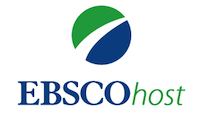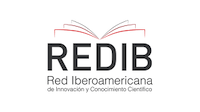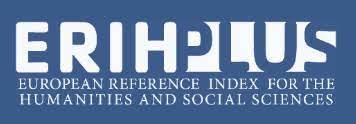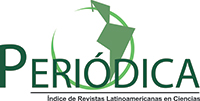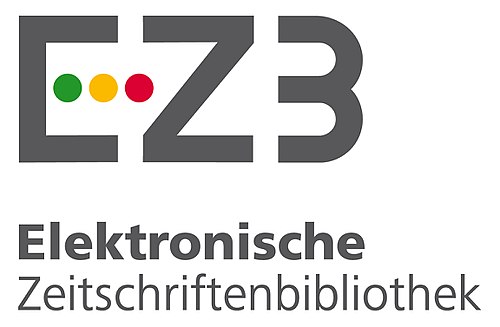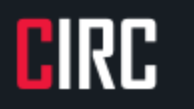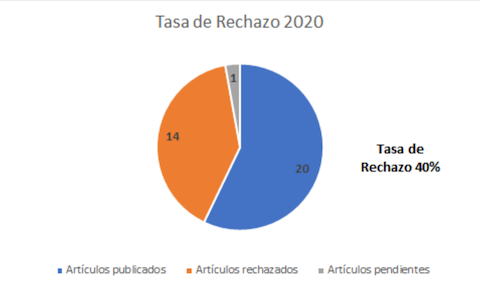About the Journal
Aim and Scope
Ciencia y Poder Aéreo is a biannual scientific journal, edited by the Escuela de Postgrados Fuerza Aérea Colombiana. It is aimed to contribute to the dissemination of research results on the fields of Operational Safety and Aviation Logistics, Management and Strategy, Technology and Innovation, and Education and ICTs. The journal also seeks to contribute to Colombian technological and scientific development.
Mission
Ciencia y Poder Aéreo is a communication means of research papers and reflection and review articles. Proposals must be original unpublished works with high scientific rigor. The journal is a meeting point for the national and international scientific community interested in the aerospace sector, offering an interdisciplinary perspective of this field and contributing to the economic, industrial, and human development of Colombia.
Vision
Ciencia y Poder Aéreo will be one of the main scientific communication means in the aerospace industry with open access, spanning both in the field of engineering and Social Sciences. The quality of published works will generate a steady and significant growth in the journal’s impact factor in its different subject areas. The journal will also be recognized in the academic, scientific and business environment, both locally and abroad, contributing to the consolidation of a national aerospace industry with high added-value. The journal will be included in top specialized databases and will be indexed in Scopus and the Web of Science.
Audience
Ciencia y Poder Aéreo is addressed to the national and international scientific community, students, professors, trainers, researchers, and innovation-related policy-makers, as well as members of the Colombian Military Forces and the aerospace industry.
Editorial Policy
Ciencia y Poder Aéreo editorial policy includes a code of ethics on the responsibilities of authors and reviewers, and on the evaluation and editorial processes. It should be noted that the process includes an internal and an external, double-blind peer review. The estimated time for the internal evaluation is one month; the estimated time for peer review is one month. In total, the evaluation process takes two months.
Peer-reviewing Process
Reviewers are assigned according to their expertise based on the topics covered by a paper. These peers do not belong to the publishing institution. In this way, the corresponding invitation, evaluation format and suggested deadline are sent. All papers will be submitted for evaluation by internal and external academic peers. The latter is a double-blind reviewing process.
Each reviewer issues a concept taking into account the following scale:
|
Assessment |
Concept |
|
Excellent |
To be published under its current status. |
|
Good |
Publishable with minor format or writing adjustments or slight methodological or theoretical changes. |
|
Acceptable |
Requires significant changes in the methodology or the theoretical sections. |
|
Not acceptable |
Not publishable: major changes required in various aspects (writing, methodology, theory and argumentation). |
Peer reviewers issue their concept based on the following criteria:
- The theoretical and experimental originality of each document.
- The relevance of submissions for current discussions in the scientific discipline addressed.
- The level of research advance of a specific field of knowledge obtained from the proposal.
- The theoretical or conceptual strength of submissions.
- The quality of the references used in each work, in terms of topicality, peer-reviewing nature, the inclusion of doi numbers, and their appropriateness to the fields studied.
- Methodological robustness, measured by the supporting methodological approaches used, the instruments, the population, and the internal, external or ecological validity of a study.
- The level of analysis of the results, in which results are contrasted against the research questions and the authors are able to discuss findings using broader theoretical aspects.
- The validity of the conclusions. Reference is made to the degree to which conclusions logically derive from the discussion and the results, as well as their contribution to a specific research field.
- Writing, coherence and cohesion. This criterion determines the appropriateness of submissions in terms of wording, clarity, spelling and the adequate pace of the narrative followed by the text.
Reviewers will have the responsibilities specified in the section “Duties of Reviewers” in order to contribute to an impartial decision on the feasibility of each paper submitted to the editorial process. In addition, they will ensure compliance with allotted times, make confidential handling of documents, expose possible conflicts of interest they may have, and show objectivity in their decisions. On the other hand, reviewers are required to identify possible ethical flaws of manuscripts (plagiarism, submission to another journal, or their complete or partial publication) and to communicate such a situation to the members of the editorial team on time.
Classification of Articles
Ciencia y Poder Aéreo accepts submissions that involve the generation of new knowledge. Among these, the following are included:
- Research article. Document that presents the original results of research or technological development projects in detail. It must include introduction, literature review, methodology, discussion, and conclusions. The abstract must be 150-300 words and follow the same structure as the content of the paper. The list of references should include a minimum of 20 peer-reviewed works (especially journal articles, book chapters and books with doi). A maximum of 6 keywords is recommended. These should be taken from Nasa Thesaurus or Unesco Thesaurus (Social Sciences).
- Research-based reflection article. Original work that offers analytical, reflexive or critical perspectives on a specific topic. These articles must present an original theoretical or conceptual proposal that scientifically contributes to the areas of interest of the journal. The article must be clear, coherent, and follow a logical structure. The abstract should contain 150-300 words and be clear about the context of the study, the research problem, the position of the author(s), and how this will be supported through arguments. The list of references should include a minimum of 20 peer-reviewed works, particularly journal articles, book chapters and books. A maximum of 6 keywords is recommended. These should be taken from Nasa Thesaurus or Unesco Thesaurus (Social Sciences).
- Review Article. Document that organizes, systematizes and provides and analysis of research results relevant to the subject areas covered by the journal. This type of article is prepared by authors with a strong domain of certain research areas, represented by the number of contributions they have published. Literature, systematic or meta-analysis reviews will be accepted. The abstract will state the objective, method (for systematic reviews or meta-analyses), results, and conclusions of the study. A minimum of 50 peer-reviewed journal articles, book chapters and/or books must be included in the list of references.
Manuscripts in Spanish, English and Portuguese will be published. Ciencia y Poder Aéreo accepts submissions whose subject areas match those described below:
- Operational Safety and Aviation Logistics
- Management and Strategy.
- Technology and Innovation.
- Education and ICTs.
The journal seeks that the topics addressed by authors are associated to the aerospace industry and other related sectors, with a particular focus on aeronautical engineering.
Text Requirements
- Articles must use Times New Roman font type, 12 points, single line spacing.
- Figures, tables and equations must follow APA standard, 7th edition. For example, these elements must be consecutively numbered and cited within the text, taking into account the correct style for titles, notes and source.
- Acronyms will be fully named the first time they are mentioned, with its abbreviation presented in brackets. Subsequently, only the acronym will be used. Acronyms previously introduced should be used throughout the text.
- Cites and references should follow the American Psychological Association (APA) standard, 7th edition.
- Footnotes will be only be used for adding relevant information to support the text.
Plagiarism Prevention Policy
Authors are responsible for the content of their papers and associated materials and declare their originality and unpublished character. Ciencia y Poder Aéreo examines all the manuscripts submitted for publication using the anti-plagiarism software iThenticate, which exposes the percentage of similarity of a given work with others already published or available in databases, thus establishing its degree of originality. Ciencia y Poder Aéreo follows the process recommended by the Committee on Publication Ethics regarding a possible suspicion of plagiarism. Thus, if a text reports a similarity rate of 20%, the editorial team will request adjustments to the document. When this similarity represents a greater rate or corresponds to complete and significant blocks of text, the document will be considered plagiarized and the editorial team will proceed to ask the authors for explanations. If these are not satisfactory, the manuscript will be automatically rejected.
Journal Ethics
The journal complies with Elsevier Ethical Guidelines for Journal Publication. According to these, submissions must be original and unpublished works and must not be simultaneously in evaluation nor have editorial commitments with any other publication. If the manuscript is accepted, the editor expects its appearance to precede any other full or partial publication. It is not acceptable that submissions have a significant share of information with other published or unpublished works, since doing so would mean incurring in redundant publication. Every submission is expected to present a minimum of 80% new information. When the journal is interested in reproducing a paper already published, the author must request authorization from the publisher that made the first publication and refer this information to the editor. It is also necessary for the authors to make their role in the research explicit and communicate possible conflicts of interest that may affect their results or analysis.
Duties of the Editorial Team and the Authors
Duties of the Editorial Team
- The journal’s editorial team, its Director and its Editor, along with its Editorial and Scientific committees, are responsible for establishing editorial policies that ensure the compliance of standards that allow its positioning as a recognized scientific and academic publication.
- The acceptance or rejection of a manuscript will be based on its importance, originality, clarity, and relevance, rather than on subjective criteria.
- The editorial team must publish corrections, clarifications, rectifications, and provide explanations, when necessary.
- Submissions accepted after the editorial quality assessment will be subject to peer review. The editorial team will ensure that this examination is not based on any prejudice or conflicts of interest.
- The Editor oversees the editorial process of all submissions and develops confidentiality mechanisms to ensure a double-blind reviewing process.
- When complaints of any kind are filed, the editorial team must answer them on time, following the rules established by the publication, and, when deemed necessary, ensure an appropriate assessment leading to the resolution of the situation.
- When a submission is not accepted for publication, the Editor or a delegate will send a written notice to the author explaining the reasons.
- The journal’s Director and Editor have the last word on the publication of articles and the issue in which they will be published. The publication date will be met as long as the authors submit all the necessary documentation within deadlines, complying with the corresponding evaluation process. Publication will depend on editorial criteria and the thematic relevance of accepted papers to their research context.
- The journal will manage scientific ethics issues based on the flow charts established by the Committee on Publication Ethics (COPE).
It should be noted that, although Ciencia y Poder Aéreo has an editorial and ethics policy, the journal is not responsible for the concepts expressed in the articles. Full responsibility lies with the authors, who certify they have respected the intellectual property rights of third parties and acknowledged and accepted the journal’s policies. Likewise, authors are responsible for stating truthfully their institutional and research affiliation.
As soon as a new issue of the journal is published, the Editor and the editorial team are responsible for its dissemination and distribution among authors, reviewers, organizations with current exchange agreements, and national and international repositories and indexing systems. Likewise, the Editor, or a delegate, will be in charge of sending samples of the journal to active subscribers, supported by the corresponding dependence of the School.
Duties of Authors
Authors should submit their articles to the e-mail address cienciaypoderaereo1@gmail.com or upload them to the platform
https://publicacionesfac.com/index.php/cienciaypoderaereo.
Instruction for authors are of public access and contain the guidelines for the submission of articles and the editing guidelines.
- Authors should include a form when submitting their manuscript.
- In this form, authors state their authorship over the manuscript and the compliance of the intellectual property rights of third parties. If any material from third parties is used within the paper, it is the responsibility of authors to ensure the corresponding authorization for the use, reproduction, and publication of tables, graphs, maps, diagrams, and photographs, among other resources.
- It is necessary to state the source of funding or the support received for the research, as well as the general information of the project (code or registry, researchers) and other details that authors consider necessary to acknowledge the impact or the origin of the paper submitted.
- It is important to indicate whether the authors have any conflicts of interest.
- Authors give their consent to include their paper into an external peer-reviewing process and agree to consider the observations made by reviewers and the Editorial and Scientific Committees in order to improve their work. Adjustments and corrections to the manuscript must be incorporated by authors within the period indicated by the Editor.
- The journal reserves the right to make style corrections and text revisions. Once the journal receives an adjusted paper, the authors will be informed of its approval.
- Although the Editor, the Scientific Committee and the reviewers approve contents based on their compliance with the editorial guidelines, their quality, and the strength of the research, the authors are responsible for the ideas expressed in their work and the ethical suitability of their paper.
- Authors are responsible for ensuring that their research and institutional affiliation data are accurate.
- During the editing process, authors may be asked by the Editor to resolve any doubts both in the reviewing and the editing process. E-mailing is the preferred means of communication with authors. In case of vital need and not finding an answer by this means, phone contact should be established.
- By signing the form of intellectual property rights, authors of accepted papers authorize the use of copyrights (user license: reproduction, public communication, transformation, and distribution) by the Graduate School of the Colombian Air Force and give their consent to publish the paper in the journal (electronic) and other means deemed appropriate.
- Authors are also asked to state their role in the elaboration of the paper. This will consider the following roles: theoretical, experimental and writing of the paper.
- Ghost authorship or honorary authorship is not allowed.
- Authors are reminded that the rights of supervised thesis works belong to the students who wrote them.
- Deliberations on the order of appearance of authors must be solved before submission.
- Any change to the metadata corresponding to the authors must be requested in a letter signed by all the authors in which they explain the reasons for this change.
- Authors should always keep their communications with the Editor as confidential.
- Authors must guarantee that their work has not been simultaneously submitted to another journal
- Local or foreign authors working in Colombia accept to open a CVLAC account and update it at the time of publishing their document.
Duties of Reviewers
Reviewers play a key role in the scientific process, since they allow assuring the integrity and quality of scientific works. For this to be the case, it is necessary to be able to trust in the work of reviewers. To that extent, based on the recommendations of the COPE, Ciencia y Poder Aéreo establishes a set of guidelines that allow reviewers to carry out their work consistently and objectively, and to do so on time.
- Professional responsibility. Authors who have published some of their works in academic journals may consider being reviewers for other publications thanks to a principle of reciprocity in the research field. Reviewers will have to describe in detail their professional, research and personal information in such a way that the journal can make the most of their work by associating them to a specific area of expertise.
- Conflicts of interest. It is a must to declare any conflict of interests, whether this are personal, financial, intellectual, professional, political or religious. If the existence of any conflict of interest is not clear, reviewers should inquire about the issue. If case a reviewer works for the same institution as the author of a manuscript, he/she will not be allowed to review that submission. In the same way, it will not be possible to accept being a reviewer with the purpose of accessing the content of an article or using its data.
- Timeliness. As a courtesy, reviewers should specify the time they will take to complete an evaluation. In that sense, they will do the necessary to meet that estimated time. In case they cannot do so, the editorial team must be informed. If it is not possible to carry out an evaluation, it is appreciated to refer colleagues who can assume the task.
- Confidentiality. It is necessary to keep the confidentiality of the manuscript and the communications sent. Reviewers will avoid using the information on the article for their convenience. Similarly, peers will not be able to involve student assistants unless the journal agrees to that.
- Prejudices. Reviewers will ensure that their decisions and judgments follow scientific and academic criteria only. There will be no influences from political, religious, cultural, commercial or gender-related issues. Peers will inform the journal in a timely manner in case they lack competence for reviewing a given submission.
- Suspicion of ethical violations. Reviewers will inform the members of the editorial team about possible errors in the manuscripts, such as plagiarism, knowledge that the article is under evaluation in other journals, redundant publication, etc.
Open Access Policy
Open access is a tool that allows collaboration in scientific research and contributes to increasing academic visibility. This journal follows the principle of sharing the academic and scientific information included in each of its issues, thus allowing reading, downloading, copying, printing, or distributing contents, without financial or technical obstacles. The only limitation is that proper credit must be given to authors, following international citation standards. The model used by the journal is an open access diamond route, in which access is completely free, with no processing fees, no author-facing publication fees, or embargoes over articles.
Authors assign Ciencia y Poder Aéreo journal the exclusive rights (reproduction, distribution, public communication, and transformation) to exploit and commercialize their work, in whole or in part, in all the formats and modalities of present or future exploitation, in all languages, throughout the life of the work and throughout the world.
All contents published in Ciencia y Poder Aéreo journal are licensed under a Creative Commons Attribution 4.0 International License, whose complete information is available at http://creativecommons.org/licenses/by/4.0/
Under the terms of this license, users are free to download, print, extract, archive, distribute and publicly communicate the content of articles, provided that proper credit is granted to authors and Ciencia y Poder Aéreo, scientific journal of the Graduate School of the Colombian Air Force. Except when otherwise indicated, this site and its contents are licensed under a Creative Commons Attribution 4.0 International License.
For other uses not considered under this license it is required to contact the Director or the Editor of the journal at the e-mail address cienciaypoderaereo@epfac.edu.co.
The Graduate School of the Colombian Air Force and this publication are not responsible for the concepts expressed in the articles, including the metadata or the affiliation stated by authors. This is the full responsibility of the authors.
Archiving Policy – LOCKSS/CLOCKSS Archiving System
Aiming at digital preservation, Ciencia y Poder Aéreo adopts University of Stanford LOCKSS system, which is an open-access network that allows libraries to gather, preserve and share online contents. The journal also uses the CLOCKSS system, which runs over LOCKSS technology.
SHERPA/RoMEO System
Sherpa/Romeo is an online database that provides summaries of publisher copyright and open access archiving policies. Based on the categories defined by this system, the Graduate School of the Colombian Air Force is a RoMEO blue publisher, which means that authors are allowed to archive the final version of their articles in repositories, stating the corresponding doi number and mentioning it was first published by Ciencia y Poder Aéreo.


